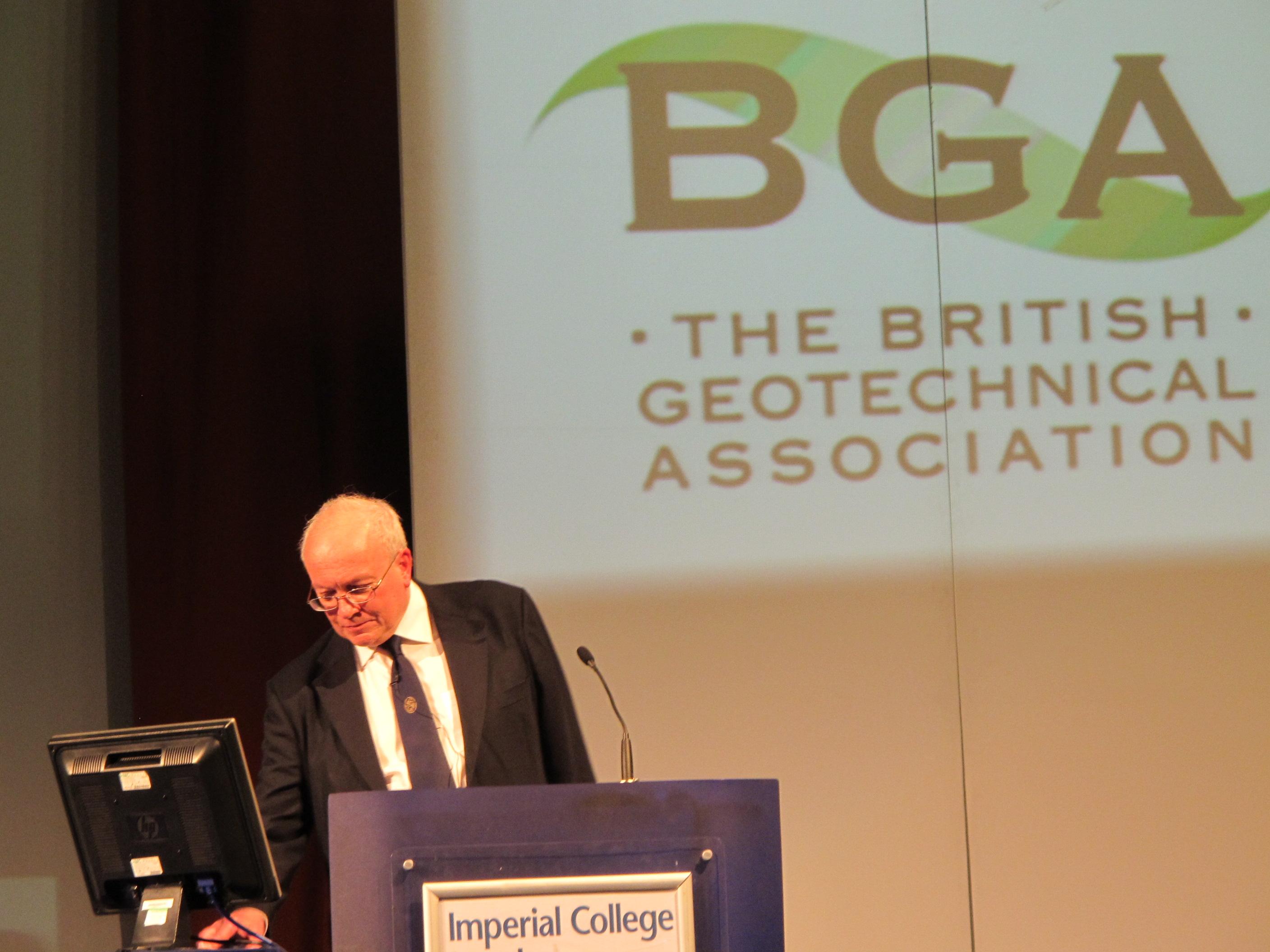
Submitted by Administrator on Mon, 23/04/2012 - 14:01
Malcolm Bolton, Professor of Soil Mechanics, Director of the Schofield Centre for Geotechnical and Construction Modelling, and Head of the Geotechnical and Environmental Group in the Department of Engineering delivered the 52nd Rankine Lecture entitled “Performance-based design in geotechnical engineering” at Imperial College on 21 March 2012. The Rankine Lecture is hosted in March each year by the British Geotechnical Association. It is widely viewed as the most prestigious of the invited lectures in Geotechnics.
The lecture commemorates W. J. M. Rankine, Professor of Civil Engineering at Glasgow University, who was one of the first engineers in the UK to make a significant contribution to Soil Mechanics, and is best known for his theory for the earth pressure on retaining walls. From 1961 to 1972 the lecture was held at the Institution of Civil Engineers, but since 1973 has taken place at Imperial College. In even-numbered years the lecturer is from the UK, and in odd-numbered years from overseas. Each lecture is published in Géotechnique, together with the text of the biographical introduction and the vote of thanks. For the first time this year the talk had a live web cast and had the largest audience ever for this Lecture.
The abstract for the talk is as follows:
Engineering design consists of a sequence of decisions which should satisfy the client’s objective performance requirements. This lecture will argue that an assessment of geotechnical performance must involve ground displacements, and that the traditional approach of specifying safety factors is potentially wasteful. In particular, the Limit State Design (LSD) approach adopted in the Eurocodes will be shown to lack objectivity and therefore to be inadequate to the needs of clients and society at large. Improvements will be proposed through the adoption of Mobilizeable Strength Design (MSD) principles in which the designer explicitly considers the stress-strain behaviour of the ground. Central to the MSD approach will be an assessment of the possible deformability and strength of the soil that lies within the anticipated deformation mechanism of the proposed geo-structure. Displacements are then calculated by applying the principle of conservation of energy to the deformation mechanism. This leaves the designer with an implicit assessment of deformations before any other checks which might later be made by Finite Element Analysis (FEA), and ensures that the intended design performance can always be checked by monitoring during construction. Examples of the application of MSD will include earth retaining structures, slopes and foundations.
Please click here to watch the Rankine Lecture online (available in two parts).
